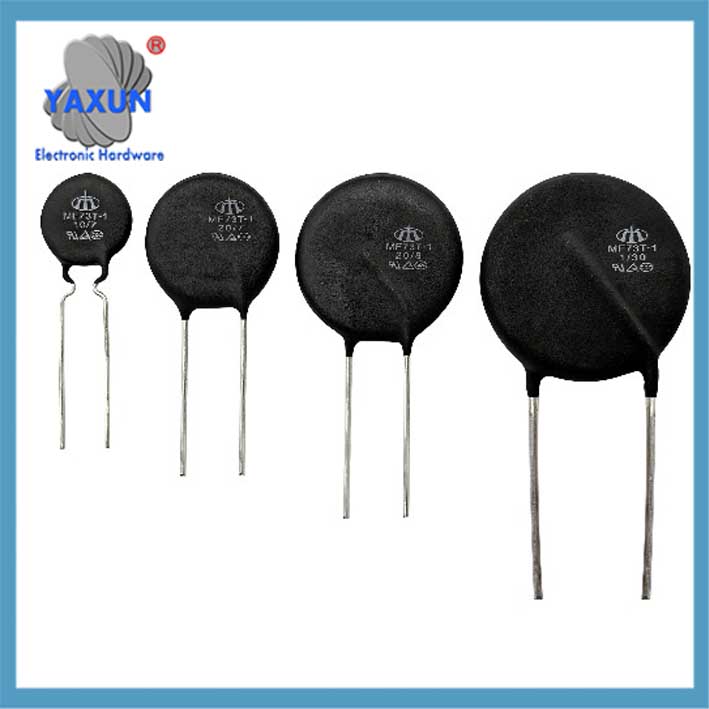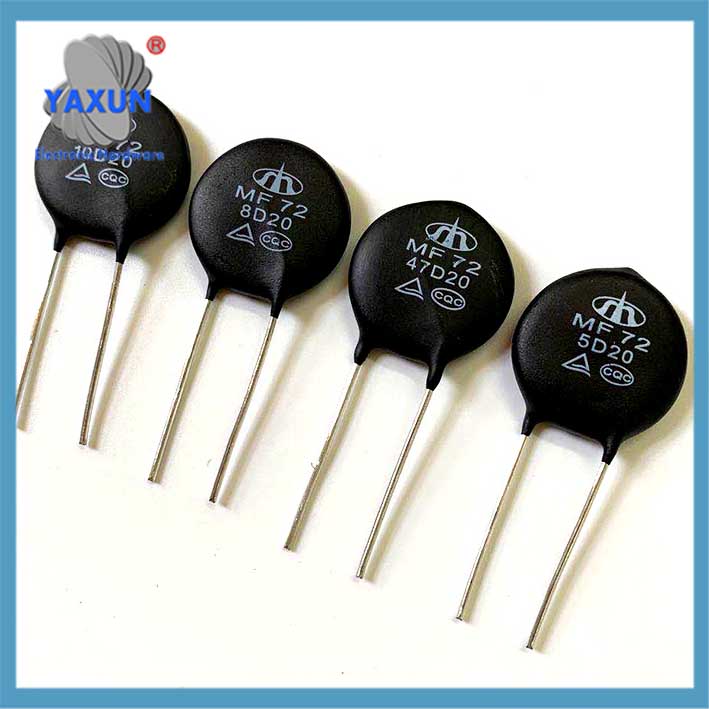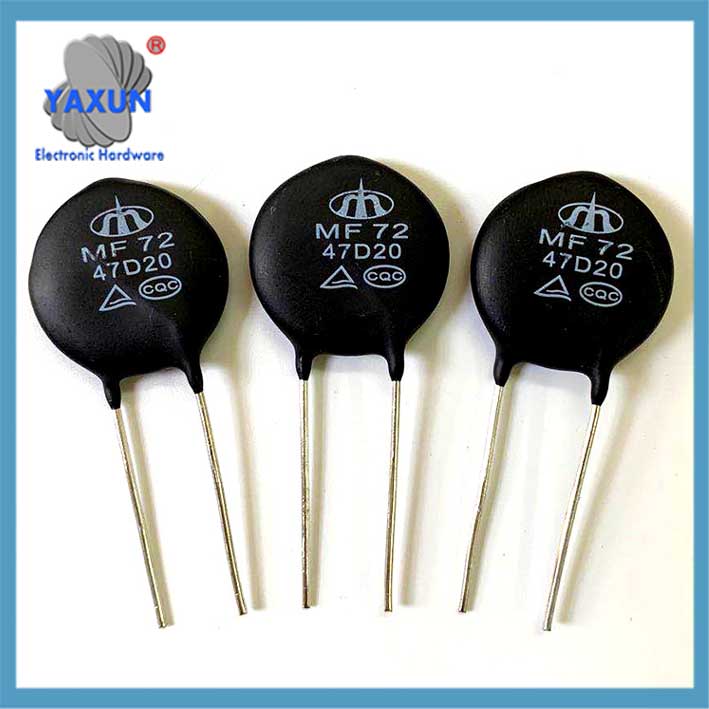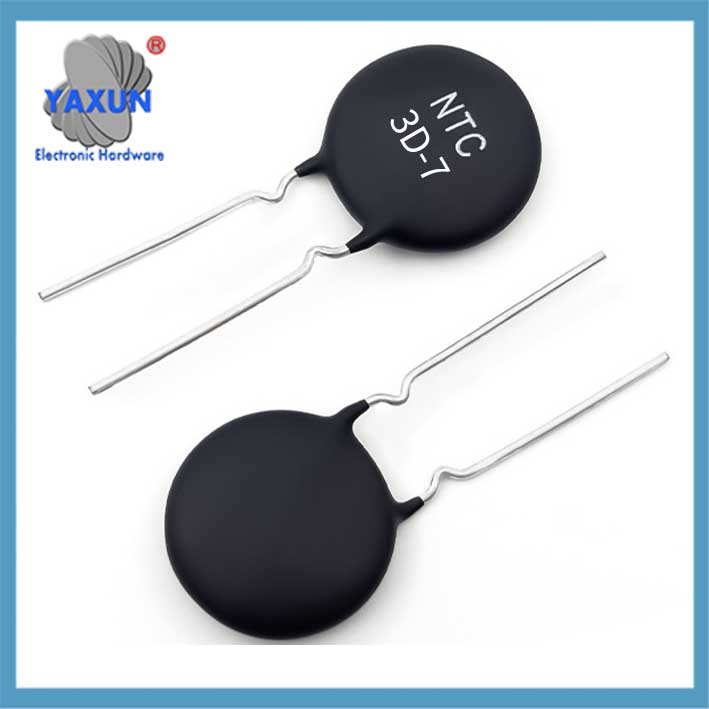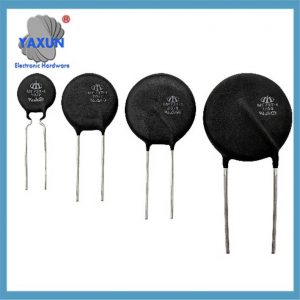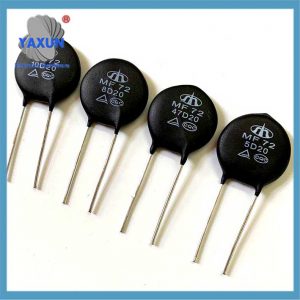Tuoteryhmät
- lämpösulake 32
- pinta-asennettavat sulakkeet 12
- termistori 36
- PCB-asennettava sulakepidike 27
- Johtosarja 6
- Terän sulakepidikkeet 17
- termostaatti 50
- Sähkösulake 24
- Autojen lämpötila -anturi 7
- Lämpövirtakatkaisija 22
- Sulakekotelon pidike 36
- Lämpösensori 75
- Lämpökytkin 68
- Auton sulake 20
- Ruuvaa sulakkeet 8
Tuotetunnisteet
Tehotermistorien käyttö ja valinta
Mikä on voimantermistori? Tehontermistori, tunnetaan myös nimellä NTC- tai INRUSH -virran rajoitin, on komponentti, joka on suunniteltu tukahduttamaan sähköpiireissä. Se käyttää negatiivisen lämpötilakertoimen itsekämmittäviä ominaisuuksia (NTC) termistori rajoittamaan korkeita virtauksia, jotka voivat nousta, kun piiri kytketään.
Power thermistor (mainly negative temperature coefficient NTC type) is a key component for suppressing surge current in electronic circuits. Its main parameters, selection points and application scenarios are as follows:
minä. Core functions and principles
Surge current suppression
At the moment of power startup, the NTC resistance value connected in series in the input circuit is high, which can limit the peak current; after power is turned on, the resistance drops rapidly due to heat (power consumption can be ignored), ensuring the stable operation of subsequent circuits.
Negative temperature characteristics
The resistance value decreases exponentially with increasing temperature: R(T)=R0⋅eB⋅(1T-1T0)R(T)=R0⋅eB⋅(T1-T01) (R0R0 is the resistance value at 25℃, BB is the material constant).
How it Works:
High Initial Resistance:
When power is first applied, a power thermistor has a high resistance, which limits the initial inrush current.
Self-Heating:
As the current flows through the thermistor, it generates heat, causing its resistance to decrease.
Resistance Decrease:
The reduction in resistance allows the circuit to draw the necessary operating current without the initial surge.
Benefits:
Protects Equipment:
By limiting the inrush current, power thermostats prevent damage to sensitive components and equipment.
Reduces Power Loss:
The resistance decrease through self-heating reduces power loss compared to using a fixed resistor.
Energy Savings:
Lowering power loss can lead to energy savings in applications like switching power supplies and other electrical devices.
II. Key parameters and selection points
| Parametrit | Definition and selection significance | Typical value/range |
| Rated zero power resistance (R25) | The nominal resistance at 5°C determines the initial surge suppression capability. Laskentakaava: R25≈U2⋅IsurgeR25≈2⋅IsurgeU (UU is the input voltage, IsurgeIsurge is the surge current) | Commonly used 2.5Ω, 5Voi, 10Ω±(15-30)% |
| Maximum steady-state current | The current that can be sustained for a long time at 25℃, needs to be greater than the circuit working current | Depending on the model 0.5A~tens of amperes |
| Residual resistance | The minimum resistance value at high temperature (such as 100℃), affecting the normal power consumption of the circuit | About 1/10~1/20 of R25 |
| B -arvo | Material constant (measured at 25℃~50℃), determines the slope of the resistance-temperature curve; high B value responds quickly but has high cost | 2000K~6000K |
| Terminen aikavakio | Response speed index, patch type (such as SMD) can reach seconds | Glass seal/enameled wire type about 10~60 seconds |
Note: Example of model identification MF72-10D-9:
10: R25=10Ω.
D: Disc package
9: 9mm halkaisija;
III. Typical application scenarios
Power supply equipment: Input surge suppression of switching power supply, UPS, adapter;
Lighting system: Anti-shock protection of LED driver, ballast, lighting distribution box;
Teolliset laitteet: Moottorin käynnistys, industrial power supply, medical instrument;
Kodinkoneet: Air conditioner, refrigerator compressor start protection;
IV. Selection and avoidance guide
Nykyinen vastaavuus
The maximum steady-state current needs to be greater than 1.5 times the actual working current to avoid continuous heating and failure.
Heat dissipation design
In high-power scenarios, sufficient spacing or auxiliary heat dissipation is required to prevent excessive temperature rise from causing insufficient residual resistance.
Extreme temperature
The operating temperature range is generally -55℃~+125℃. Glass-sealed models (resistant to 150℃) are preferred in high-temperature environments.
V. Package and performance comparison
| Package type |
Edut | Applicable scenarios |
| Epoxy resin | Alhaiset kustannukset, good waterproofness | Kodinkoneet, ordinary power supplies |
| Glass package | High temperature resistance (> 150 ℃), nopea vastaus | Teollisuuden laitteet, automotive electronics |
| Surface mount type (Smd) | Pieni koko, suitable for high-density PCB | Compact power module |
Tip: Be cautious in frequent switching scenarios – NTC may lose surge suppression capability when insufficient cooling is insufficient. Tällä hetkellä, a parallel relay bypass can be connected.
Ota yhteyttä
Sähköpostiasi odotellessa, vastaamme sinulle sisällä 12 tuntia arvokasta tietoa, jota tarvitset.
 English
English Afrikaans
Afrikaans العربية
العربية বাংলা
বাংলা bosanski jezik
bosanski jezik Български
Български Català
Català 粤语
粤语 中文(简体)
中文(简体) 中文(漢字)
中文(漢字) Hrvatski
Hrvatski Čeština
Čeština Nederlands
Nederlands Eesti keel
Eesti keel Suomi
Suomi Français
Français Deutsch
Deutsch Ελληνικά
Ελληνικά हिन्दी; हिंदी
हिन्दी; हिंदी Magyar
Magyar Bahasa Indonesia
Bahasa Indonesia Italiano
Italiano 日本語
日本語 한국어
한국어 Latviešu valoda
Latviešu valoda Lietuvių kalba
Lietuvių kalba македонски јазик
македонски јазик Bahasa Melayu
Bahasa Melayu Norsk
Norsk پارسی
پارسی Polski
Polski Português
Português Română
Română Русский
Русский Cрпски језик
Cрпски језик Slovenčina
Slovenčina Slovenščina
Slovenščina Español
Español Svenska
Svenska ภาษาไทย
ภาษาไทย Türkçe
Türkçe Українська
Українська اردو
اردو Tiếng Việt
Tiếng Việt
